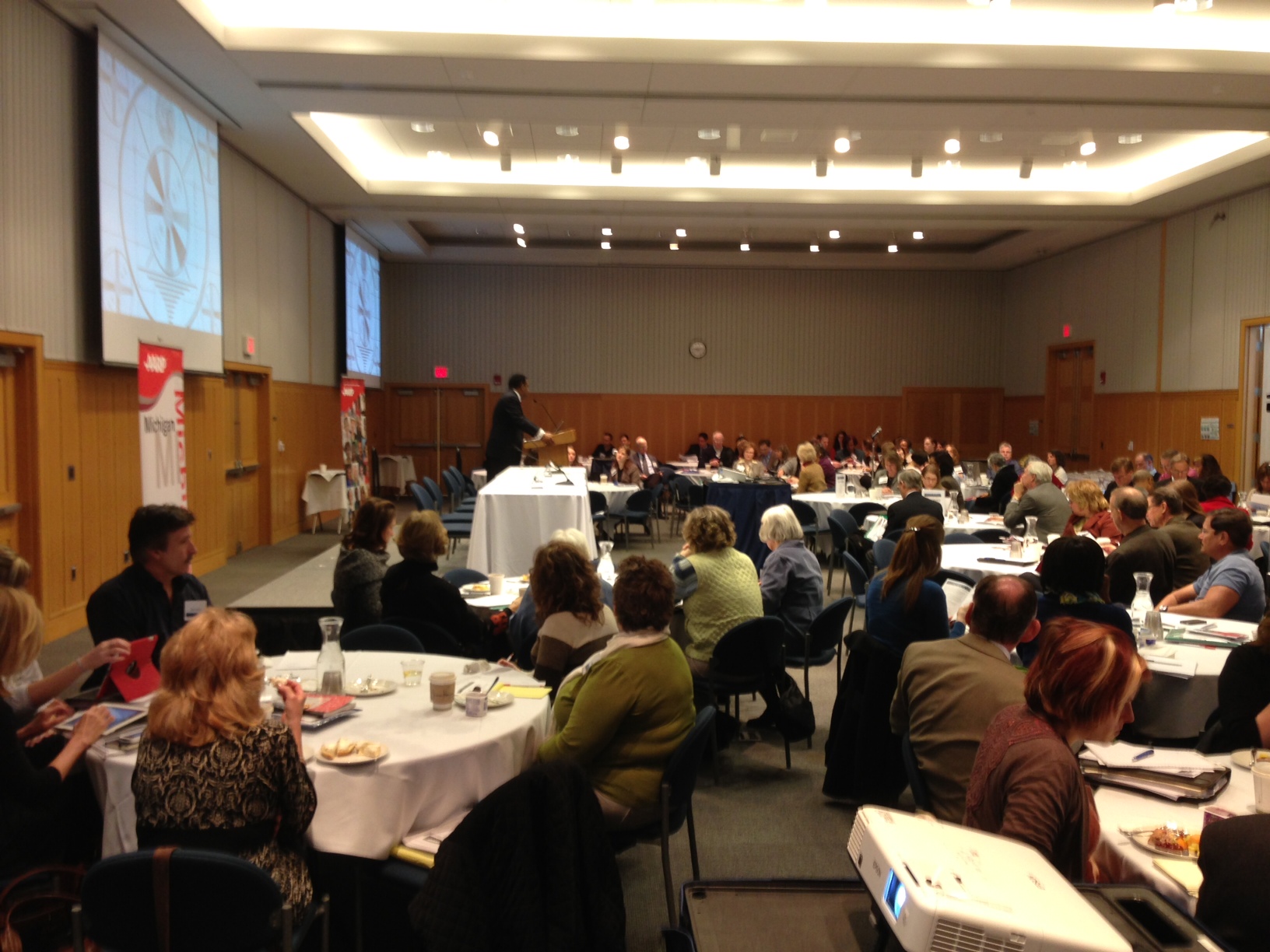AARP Hearing Center

ANN ARBOR, MI – Michigan’s rapidly aging population demands that state and local governments adapt to enable communities to thrive in the decades ahead, 200 city planners, policy makers, public health officials and service providers learned at the AARP Michigan Age-Friendly Communities Conference on Feb. 28.
Participants at the University of Michigan Palmer Commons heard experts talk about the ongoing demographic revolution and the challenges it presents in areas such as housing, transportation, health care, community planning and design.
“The aging of our population is a phenomenon that will profoundly affect all sectors of our society,” said Karen Kafantaris, AARP Michigan Associate State Director for Livable Communities.
“A key component of meeting this challenge will be our nation’s communities successfully adapting to accommodate their aging residents by making changes in infrastructure and services that will benefit all age groups.”
The aging of the baby boom generation has made seniors Michigan’s fastest- growing age group. The percent of its population over age 65 will increase by about 40 percent by 2030, meaning one-quarter to one-third of the state’s population will be seniors, according to demographics experts. Nationwide, the 65-plus population will double by 2030.
Michigan is slightly older than the U.S. as a whole, noted Todd Zimmerman, a New Jersey-based urban redevelopment expert. Using U.S. Census statistics, he noted the 65-84 age group represents 13 percent of the population of Michigan, compared to 11 percent nationally and the 85-plus age group in Michigan comprises 2 percent of the population, compared to 1 percent nationally.
The 85-and-older age group will grow faster than any other in the decades ahead and will require more and different services, said Richard Birkel, senior vice president, National Council on Aging.
“We have to look at what is the mix of health care services we want to provide to older adults and how do we pay for it?” Birkel asked.
The summit also featured speakers from cities, including Grand Rapids and New York City, which have incorporated age-friendly concepts with success.
“We’re experiencing an aging revolution,” said Kristin Misner, chief of staff to one of the deputy mayors of New York City, who added New York starting taking steps to become an age-friendly city in 2008.
The aging population will require changes in infrastructure and services that will benefit all age groups, such as safer crosswalks, streets accessible to pedestrians and bicyclists, age-friendly housing design and multi-modal mass transit, several speakers said.
Rodney Harrell, a senior strategic policy advisor at AARP, said substantial growth of mass transit is already under way. He said older adults’ use of mass transit increased by 40 percent in the last decade to over 1 billion riders.
Arnold Weinfeld, director of strategic initiatives and president of the Michigan Municipal League Foundation, said leaders must be mindful of the shifting demographics as they look to continually improve the quality of life in their communities.
“Local leaders need to be aware that an increasing number of the next generation of retirees will move out of their single-family homes and into multi-family dwellings,” Weinfeld said. “As they do so, they are looking for many of the same amenities as everyone else – vibrant, walkable downtowns and neighborhoods with shops, restaurants and cultural attractions as well as open green spaces such as parks, trails and greenways. They will work longer, live longer and be more active than any previous group of older Americans.”
Easily accessible downtown areas will be vital to a city’s growth, said Peter Allen, Ann Arbor developer and University of Michigan educator. He said the “walkable, multi-use, intergenerational downtown… is where the future is.”
Joanne Feutz, chair of the Universal Design Committee of the Grand Rapids Home Builders Association, said it’s critical that communities and builders realize that 19 percent of the population has a disability.
“Why would you build a house that’s inaccessible to 19 percent of the market?” she asked. “Build it for the least among us and it will work for all of us.”
The conference also explored age-friendly community planning in Michigan and reviewed guidelines from the World Health Organization that will shape the future of housing, transportation, health care and social services in healthy communities.
Jacqueline Morrison, AARP Michigan State Director, said the Ann Arbor conference “brought together leaders from the public sector, nonprofits, and foundations and raised awareness about aging issues. We expect this summit enlightened participants about the real possibilities and advantages of enabling people to age comfortably and successfully in the communities where they live.”
Morrison added: “The next step, our call to action is taking what we’ve learned here and applying it in our home communities to improve life for all in our great state.”
Conference partners were: AARP Michigan, the City of Ann Arbor, American Planning Association Michigan Chapter, Michigan Municipal League, Presbyterian Villages of Michigan, University of Michigan, Office of Services to the Aging and Michigan State Housing Development Authority.































































